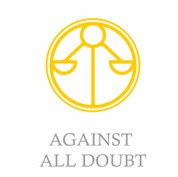I am sure you all know the high mountains as well as the deep valleys of life. While we all enjoy the mountaintops the valleys are not as pleasant. Yes, some also think we need them to appreciate the mountaintops, but we can at least try to flatten them out a little.
How to cushion the valleys in the hike of life? Find out what you can do to achieve this!
Handling problems and constraints
It is necessary to distinguish between a problem and a constraint. A problem can be solved, for a constraint you need to look for a way to deal with it. So the first thing is to look at a situation and find out if it is something that can be solved or changed (e.g. reaction or behavior) or if you find yourself in a constraint situation that can’t be changed (e.g. a broken or lost limb or changing somebody else). Both situations have in common that you might feel helpless and don’t know what to do.
Problems
Problem solving often means change and changing means to leave behind well-known behavior that maybe did already help in the past. This is why it is important to recognize this and start to change your thinking from “I have to leave behind …” to “I want to move towards this…”. Try to paint the future without the problem in the most colorful and detailed way possible. This helps you to motivate yourself and start to see the real benefit.
Constraints
Here it does not make sense to look for a solution- because it can’t be solved. Instead you need to look for a way of handling the situation differently. You just can’t run a marathon with a broken leg, but you can find out why running a marathon is what you want to do. It might be to stay fit or to be outside. Now you can find ways to fulfill your need with other things. In my old blog “If you change yourself, others may change too” you can read how taking another route up to the mountaintop has helped me around a constrained situation.
Emotions and Imposter Syndrome or distance (mindfulness)
When we are in a deep valley we ask ourselves questions like: “What is wrong with me?” or “What did I do wrong?” . In work life this can even be worse when you are already suffering from Imposter Syndrome. In that case you think ” I knew I am not good enough for this!” or “This definitely shows I am in the wrong position!”.
All of that thoughts are understandable, but it might help to step back and look at the situation with some distance. That way you will find, that the topic might very well be that the circumstances don’t allow to do what needs to be done or that there are just different goals in the room. This allows you to find new strategies to overcome the challenges you are facing. Then set small goals to reach the big one in little steps. The good thing about small goals is that they change your perception. The challenge starts to feel doable.
If you additionally have the Imposter Syndrome a competency matrix can help. This way you can start to see your potential! You can download an example.
Resilience
Resilience is not only the ability to cope with challenges, changes or difficulties. It is much more than that. It is also the ability to use our future visions, talents, sources of happiness and inspirations. Resilience is nothing that is in your DNA or stabile, but there are resources that are beneficial. On the personal side this is for example the emotional stability or self-reflection ability. A proactive attitude like looking for solutions is also helpful. Also your family, friends or co-workers are resources you can use.
Another good thing to strengthen your resilience is to find exemptions. This motivates and you can use those as blueprints.
Try to find your sources of energy or power. To do this you can use the ABC – Method.
Another way to strengthen your resilience is relaxation. Here you have to find out what does the trick for you. There are people that need a physical compensation like sport or massages. Others are more eye- minded. Here a dream-journey or a good book might help better. The third possibility is that you need sound. Therefore a concert or a reading might be exactly what you need. For you it might also be a combination of two or all three possibilities.
How to cushion the valleys in the hike of life? There are a lot of possibilities to do that:
- Distinguish between problem and constraint.
- Think “I want to move towards…” instead of “I have to leave behind…”.
- If you can’t change the situation- think of a way around it.
- Distance yourself.
- Set small and reachable goals.
- Find your sources of power.
- Find your way of relaxing.










